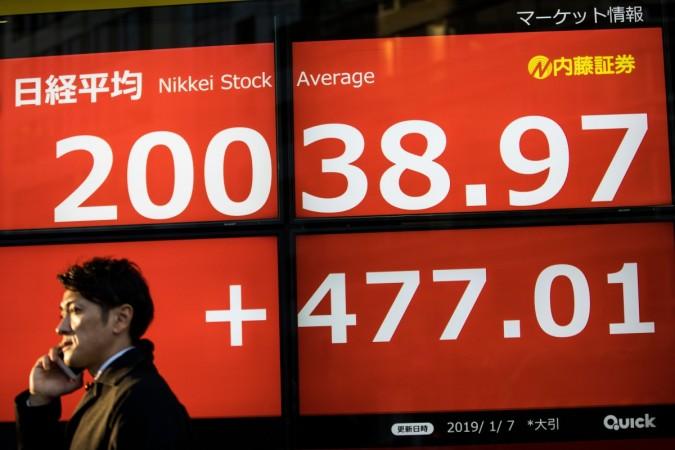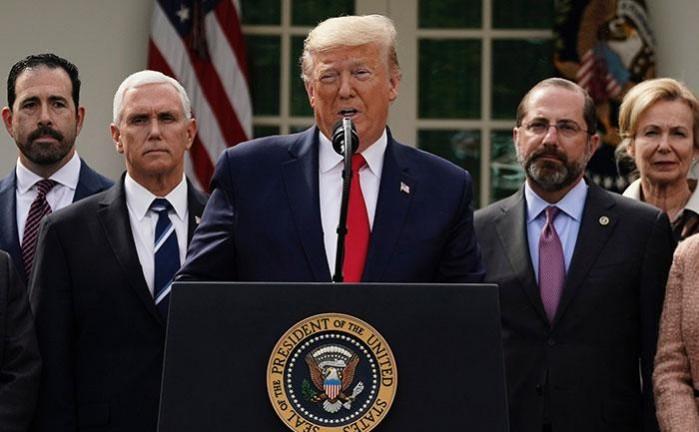The dollar inched higher, stock markets struggled for traction and oil fell on Monday as a U.S.-China spat over the origin of the coronavirus put the brakes on optimism about an economic re-start as countries around the world ease restrictions.
In reduced trade, with China and Japan on holiday, US stock futures fell 1.7 per cent and US crude tumbled 7 per cent. The safe-haven US dollar rallied to one-week highs against the risk-sensitive Australian and New Zealand dollars.

Tough period for markets
South Korea's KOSPI fell, Hong Kong's Hang Seng returned from a two-session holiday with a 3.5 per cent drop, while Australia's ASX 200 eked out a 0.5 per cent gain. The moves extended a dour start in May which began on Friday with bleak U.S. data and the threat of fresh trade-war hostilities between the world's two biggest economies.
US President Donald Trump and Secretary of State Mike Pompeo added to worries with fresh efforts to pin the blame for the pandemic on China, where the new coronavirus outbreak is believed to have originated. The latest salvo came from Pompeo on Sunday who said there was "a significant amount of evidence" that the virus emerged from a laboratory in the central Chinese city of Wuhan.
Pompeo did not provide evidence, or dispute a US intelligence conclusion that the virus was not man-made. But the comments double down on Washington's pressure on China as U.S. deaths and economic damage mount. "The risk of a pullback has increased this week," said Chris Weston, head of research at Melbourne brokerage Pepperstone.
"The United States is not alone in publicly taking aim at China, but whether it's Trump, Kudlow or Pompeo the narrative is more frequent, and traders are selling yuan," he said.

With Chinese markets shut on the mainland, offshore yuan extended Friday's slump to hit a six-week low of 7.1560 per dollar before clawing back to the flat. The Australian dollar dropped below the 64-cent mark for the first time in a week, falling 0.4% to $0.6390.
Benchmark U.S. 10-year Treasuries hardly budged from elevated levels, with the yield holding at 0.6181% as demand for safe-haven assets was firm. Gold steadied at $1,696.41 per ounce.
Blame game
An increase in tension between Washington and Beijing comes as both countries suffer the economic fallout from the pandemic and the disruption wrought by lockdowns to combat it. China has reported its first-quarter GDP contraction since such records began a generation ago and posted a slump in April export orders last week.
US manufacturing plunged to an 11-year low last month, consumer spending has collapsed and some 30.3 million Americans have filed claims for unemployment in the last six weeks. "Trump is looking to get re-elected...," said Nomura's joint head of APAC equity research Jim McCafferty, likening the move to "Japan-bashing" by then-president Ronald Reagan in the 1980s.
"We've seen this before, and I think as governments around the world become increasingly domestically focused...finding a villain elsewhere makes a lot of sense," he said.
That means a challenge for investors looking for income which seems to have, for now, stumped even billionaire Warren Buffett.
Buffet's loss
Buffett's firm, Berkshire Hathaway, made an almost $50 billion loss in the first quarter but ended it with a record cash pile and nothing to spend it on.
Buffett said he remains keen on making a big acquisition but has not provided financial support to companies as he did during the 2008 financial crisis because he saw nothing attractive enough.
Elsewhere in currency markets, the safe-haven Japanese yen rose 0.2% to 106.72 per dollar and the euro was a touch weaker at $1.0950. The pound and New Zealand dollar slipped.

In commodity markets, U.S. crude futures sank in early trade on worries about oil oversupply and crumbling demand, even as some U.S. states and cities around the world start to ease coronavirus pandemic restrictions.
West Texas Intermediate crude futures last sat at $18.38 per barrel, down $1.40, while Brent futures were down 2.4%, or 62 cents, at $25.82.
The U.S. April jobs report will be released on Friday, but some analysts say it may not fully reflect how many people have been thrown out of work.














